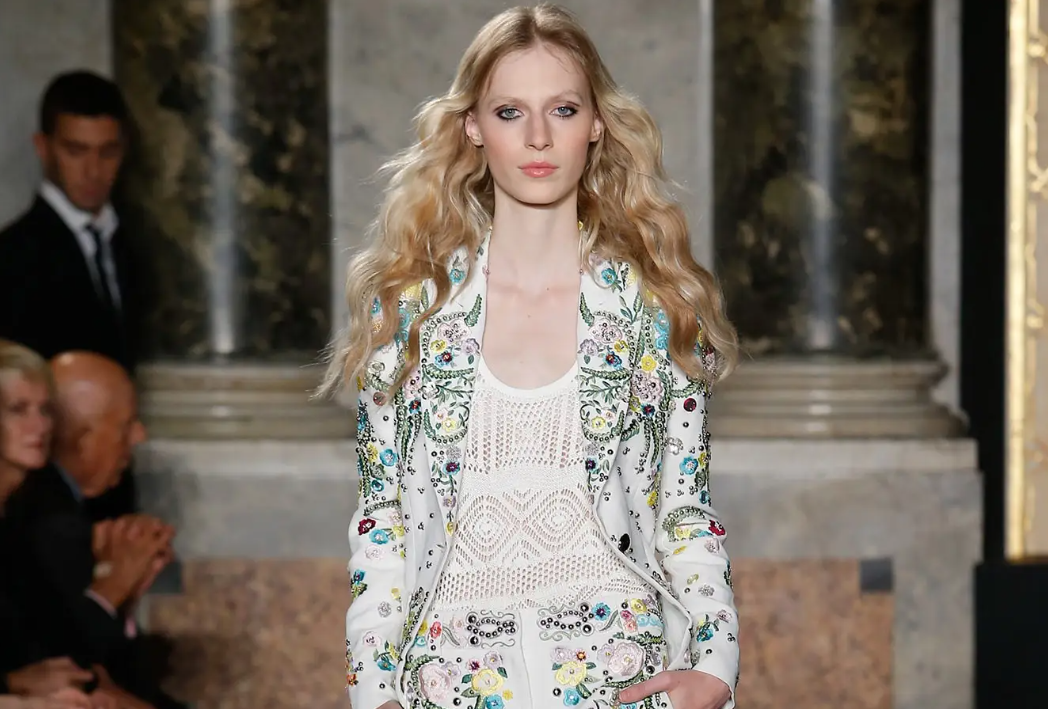
The 1950s fashion look had actually been quietly conceived years earlier. When scholars explore the fashion history of this era, they tend to define it as between 1947 and 1957, a period that coincided with the golden age of Christian Dior's fashion house. In 1957, however, the fashion world suffered a major change.
This year, Christian Dior unfortunately passed away, leaving an unfinished fashion career. It was then that Yves Saint Laurent, then just 21, took over the baton at Dior, launching a Beatnik-inspired collection in 1960, an innovation that not only breathed new life into the Dior brand, but also made a mark on the fashion world.
After the end of World War II, women returned to their families, and in the context of a prosperous society, refinement and elegance became the main theme of fashion throughout the 1950s. During this period, women's fashion was marked by slim waists, full hemlines, impeccable hairstyles and diverse accessories, every detail showing the unique charm of the era.
The clever collocation of hats, gloves and handbags has become the standard paradigm of this era, which not only adds infinite possibilities for women's daily wear, but also creates an elegant and noble temperament invisibly. The variety and practicality of these accessories provide women with endless fashion and beauty options, enabling them to easily cope with various occasions.
While this decade may be remembered by some as a step backwards for women's status, there is no denying that the 50s did give birth to many stunning fashion looks in the pursuit of extreme beauty.
Women's fashion in the 1950s was dominated by the hourglass silhouette
Dior's New Look leads the way
The 1950s Look was dominated by the silhouette design proposed by Christian Dior in his 1947 New Look Corelle Line collection.
The waisted dress with an exaggerated feminine silhouette resembles the rapid swing of a pendulum. In the 1940s, the wartime masculine silhouette of crisp shoulders and slender hips dominated.
By the 1950s, the shoulders were rounded with fillers, the waist was shrunk to Victorian proportions, the hips were exaggerated, and tulle and ruffles were used to add bulk to the bottom, in order to accentuate the extremely "feminine" silhouette.
Women's clothing starts from the waist line, when it is high and low, but it always exists and is valued, and the waist becomes the most eye-catching place. Because of this, fashion is more feminine than ever.
Dior is credited with leading this aesthetic trend, and all of his contemporaries are following it in their own way. For much of the decade, brands such as Balenciaga, Balmain, Jacques Fath and Hardie Amies kept coming out with the most gorgeous, feminine gowns.
Paris was reborn after the occupation
In other words, as soon as Paris recovered from the devastating decline of the German occupation, its fashion designers kept on designing, which satisfied the world's insatiable appetite.
Knockoff versions of Paris couture flourished on the black market, and American department stores even sent people with photographic memories to the Paris press for weeks of quick sketches in order to instantly replicate what they had seen.
Today, fashion historians consider the decade 1947-1957, during which Mr. Dior designed, to be the golden age of couture. At that time, people bought luxury clothes at luxury prices and enjoyed a luxurious life, and high fashion designers led the fashion in this period.
By the end of the decade, the aesthetic of youthful fashion and the space Age had replaced the pure beauty produced by the Golden Age, and designers applied a high messianic aesthetic, as if pushing the limits of beauty.A straighter silhouette appears
Chanel is back in fashion
Five years after the appearance of a new look, a new silhouette is also in the pipeline, and the reason is that fashion only lasts so long. The stiff hourglass begins to soften. Dior introduced an H - and Y-shaped silhouette. If the decade's silhouette began with triangles superposed with inverted triangles, it ended with the prevalence of the inverted triangle shape - A trapezoid or A-shaped profile.
By 1958, hemlines were gradually getting longer and skirts were getting wider, paving the way for the miniskirt, though not as quickly. At the same time, designers began experimenting with delicate linear silhouettes, placing less emphasis on the waist and more on architecturally symmetrical lines.
This relaxed silhouette was supported by Chanel, who kept a low profile after the war because of her tarnished reputation, making a grand comeback on February 5, 1954 (her lucky number - she always liked to make an appearance on that date). She introduced spring dresses with sharp cuts and simple lines.

